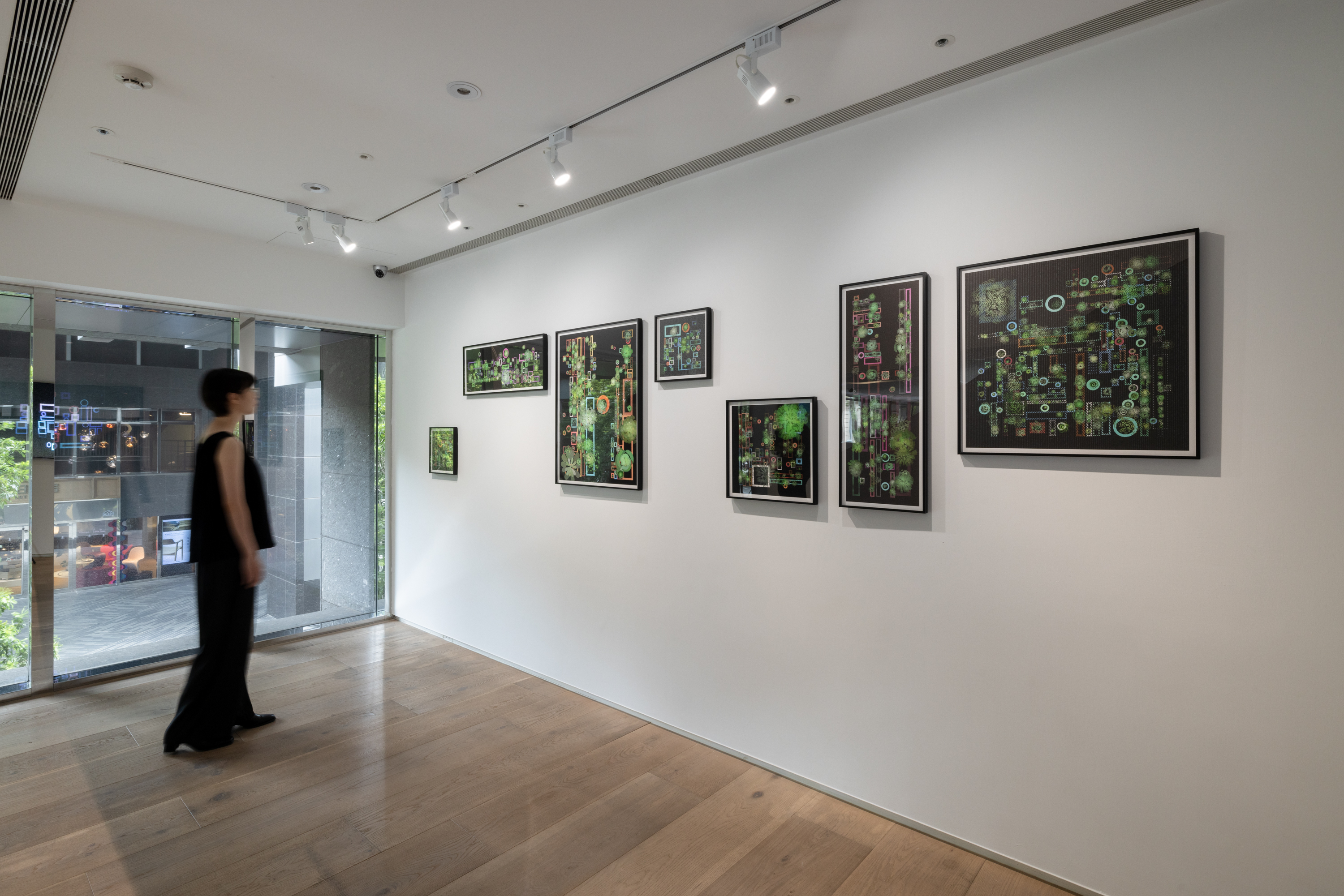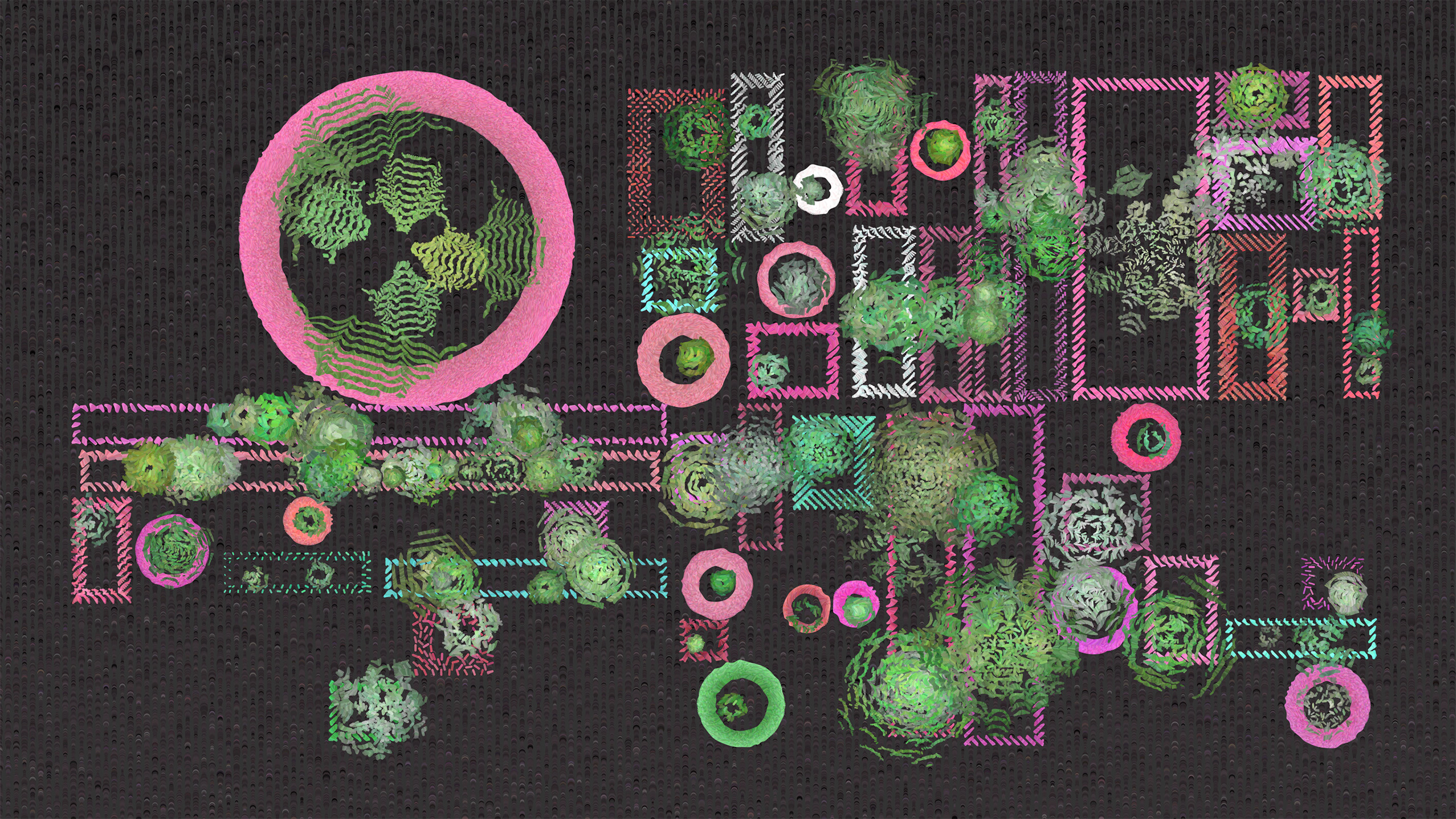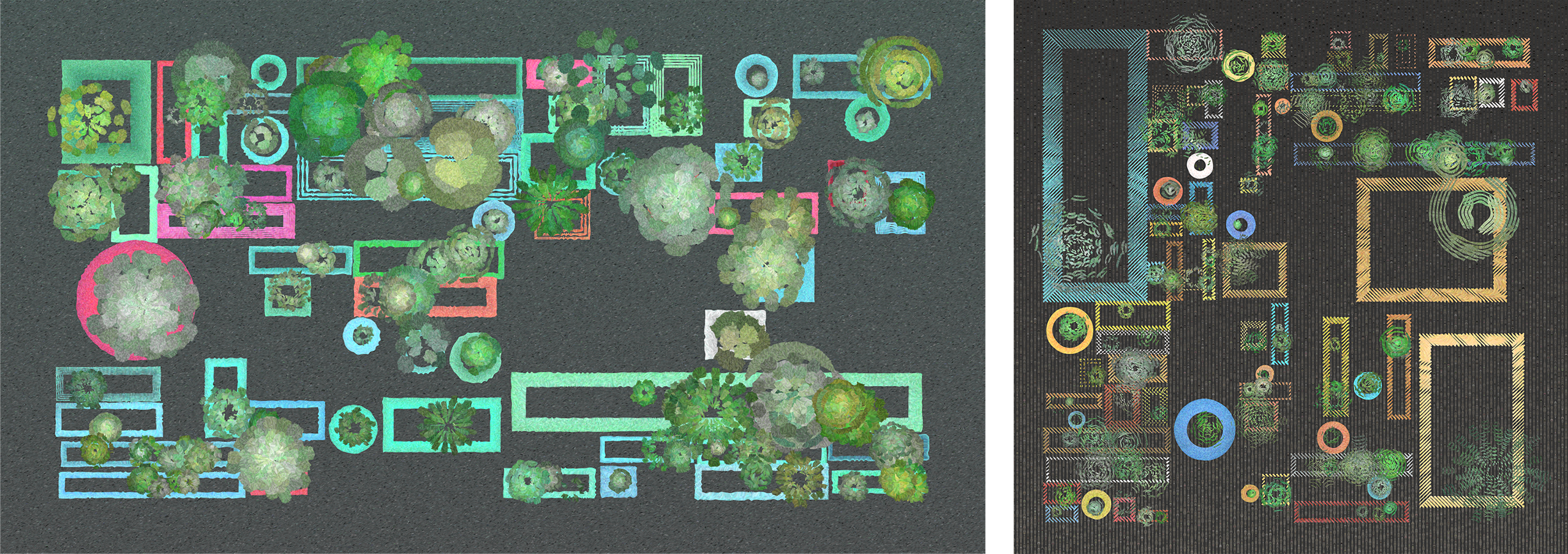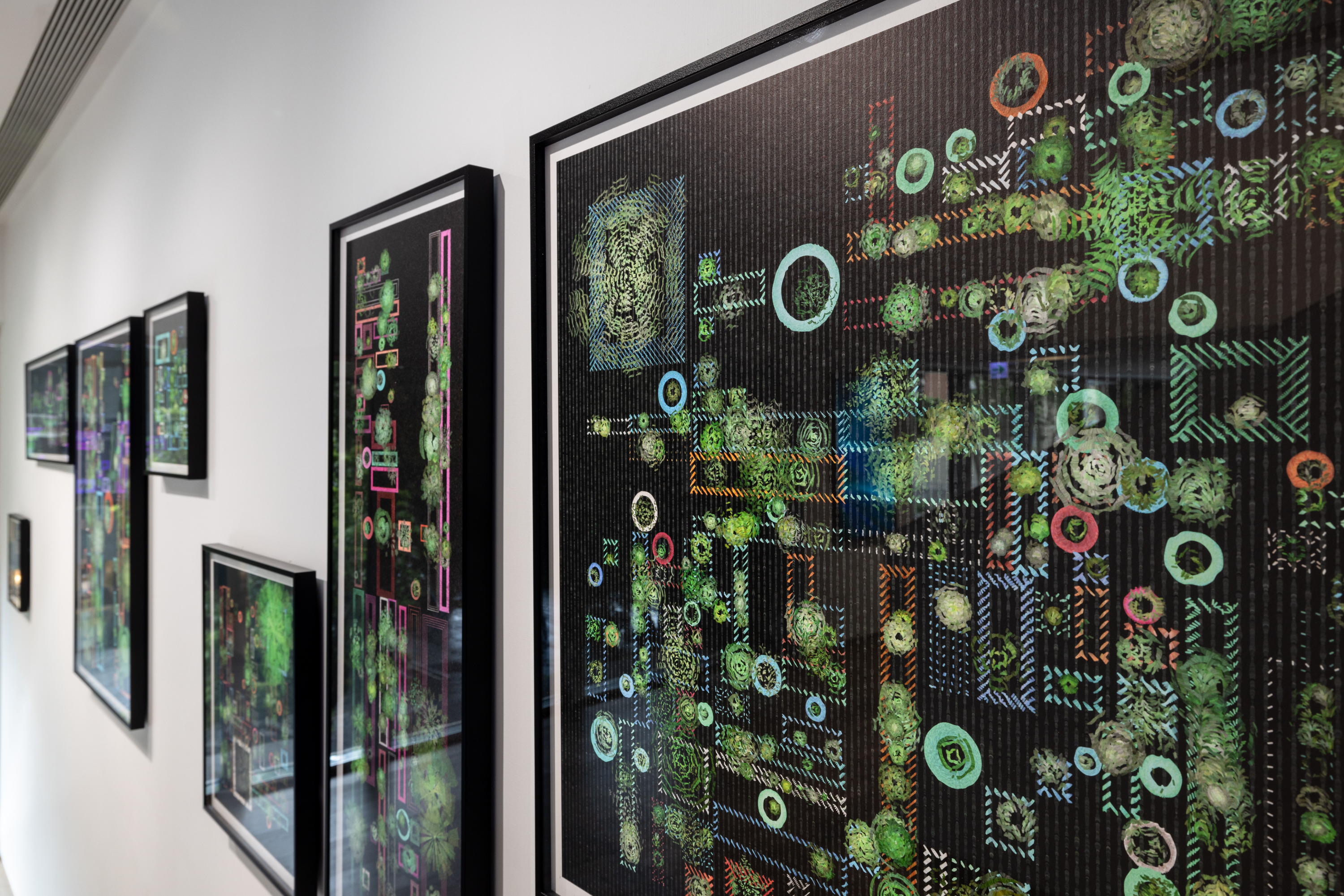
This artwork draws inspiration from potted succulent plants found on the streets. It integrates recursive algorithms and easing functions in a mathematical and geometric manner to create an infinitely generative art piece.
The main layout of the artwork uses a recursive algorithm called "block division" to divide the canvas into different-sized blocks. Each block randomly contains rectangular, square, or circular plant pots, and each pot randomly generates a variable number of succulents. The leaves of each succulent are drawn using random easing curves, creating the thickness of the succulent by overlaying multiple layers of leaves. Additionally, random stroke densities are generated during the drawing process to simulate the texture of the canvas in physical painting.


In this piece, the artist doesn't determine any specific details of the image; instead, they design a "life system" that allows the piece to generate different appearances randomly. The artwork seems to have a life of its own, with the artist acting as a gardener, observing the piece's growth.
This artwork was displayed in The Future Life, Future You – Digital, Machine and Cyborgs exhibition at the Jut Museum. The exhibit consisted of physical prints and a real-time generative installation with a TV and a Raspberry Pi.

